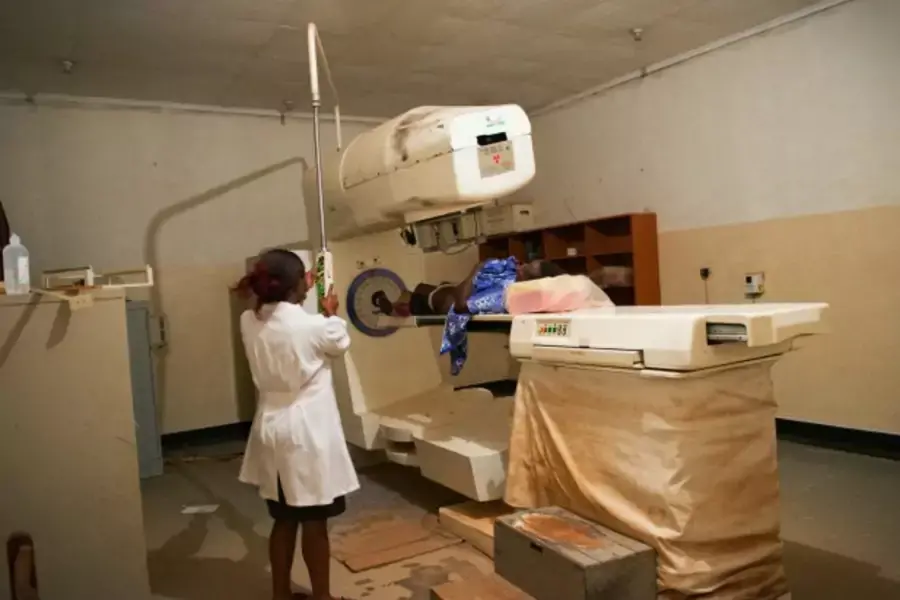Noncommunicable Diseases by the Numbers

This guest post is from my colleague, Tom Bollyky, a senior fellow for global health, economics, and development at the Council on Foreign Relations. Here he discusses his recently released Independent Task Force report: The Emerging Global Health Crisis: Noncommunicable Diseases in Low- and Middle-Income Countries.
Rates of heart disease, cancer, diabetes, and other noncommunicable diseases (NCDs) in low- and middle-income countries are increasing faster, in younger people, and with worse outcomes than in wealthier countries. My new CFR-sponsored Independent Task Force report and the accompanying interactive look at the factors behind this epidemic and the ways the United States can best fight it.
More on:
Why do the rising rates of NCDs in low- and middle-income countries matter for the United States? Here are a few snapshots from the Task Force report that illustrate the importance of these diseases, what the United States and international partners can do to address them, and the reasons why progress against this emerging epidemic is possible.
The High Costs of Chronic Diseases
- In 2013, NCDs killed eight million people before their sixtieth birthdays in low- and middle-income countries.
- In low-income countries, the increase in death and disability from NCDs was 300 percent faster than the decline in infectious diseases between 1990 and 2010. In lower-middle-income countries, NCDs outpaced reductions in infectious diseases by 33 percent over that time period.
- Cardiovascular diseases cause thirteen million deaths each year in developing countries, which is more than a quarter of all deaths in these countries.
- Premature deaths from breast cancer grew 90 percent in low-income countries between 1990 and 2013.
- Approximately 300,000 women die from cervical cancer each year, mostly in developing countries.
- Nine out of ten chronic obstructive respiratory deaths worldwide occur in low- and middle-income countries.
- Most of the death and disability from NCDs in developing countries occurs in people under the age of sixty. In many low-income countries, particularly in Africa, that proportion rises to 80 percent or higher.
- The World Economic Forum projects that the NCD epidemic will inflict $21.3 trillion in losses in developing countries over the next two decades—a cost nearly equal to the total aggregate economic output ($24.5 trillion) of these countries in 2013.
The Response to NCDs
- In the countries where the United States has significant investments in global health, NCDs accounted for 28 percent of the premature (under age sixty) deaths and a third of the death and disability in 2010.
- The U.S. government spent $44.17 in aid for each year of life lost to disability and early death from HIV/AIDS in 2010 (as measured in disability adjusted life years, or DALYs), $4.21 per DALY lost to malaria, and $1.82 per DALY lost to tuberculosis, but only $0.02 per DALY lost to NCDs.
- International aid for NCDs represented just 1.2 percent of development assistance for global health in 2011.
Progress Is Possible
- The United States cut death rates from cardiovascular diseases more than 40 percent between 1980 and 2000. Mortality from stroke and coronary heart disease decreased by two-thirds in some high-income countries.
- U.S. breast cancer death rates declined by one-third between 1990 and 2013, mostly in younger women. Impressive declines in mortality have also occurred for leukemia and lymphomas, retinoblastoma, and stomach and testicular cancers in the United States and other high-income countries
- If the forty-nine countries in which the United States makes significant global health investments achieved the same rates of premature NCD mortality as the average high-income country between 2000 and 2013, more than five million deaths of people under age sixty would be averted by 2025.
For more on noncommunicable diseases in low- and middle-income countries, read the report from CFR’s independent task force and check out the interactive.
More on:
 Online Store
Online Store
